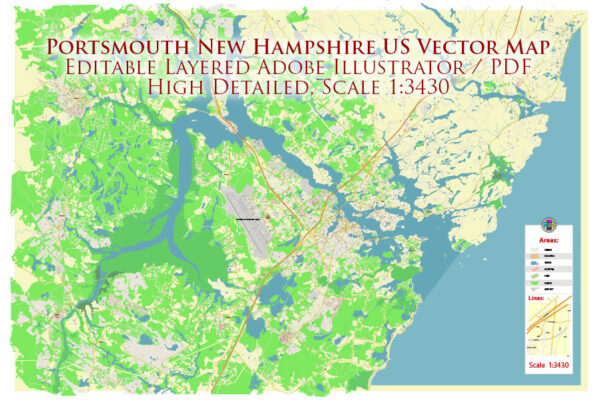Portsmouth, New Hampshire, has a rich history that significantly influenced its urban development. The city, situated along the Piscataqua River, played a crucial role in early colonial America. Here’s an overview of the historical urban development of Portsmouth:
- Colonial Era (17th Century):
- Portsmouth was settled in 1623, making it one of the oldest cities in the United States. The area was initially named Strawbery Banke after the wild strawberries that grew along the Piscataqua River.
- Maritime Trade and Economic Growth (18th Century):
- Portsmouth became a major center for maritime trade during the 18th century. The city’s strategic location allowed it to prosper economically through shipbuilding, fishing, and trade.
- American Revolution (Late 18th Century):
- Portsmouth played a significant role in the American Revolution. The city was a hub for revolutionary activities and served as a center for shipbuilding for the Continental Navy.
- 19th Century Industrialization:
- The 19th century saw the industrialization of Portsmouth. Factories and mills were established, contributing to the city’s economic growth. The development of transportation infrastructure, such as railroads, further connected Portsmouth to regional markets.
- Victorian Era Architecture:
- The Victorian era left its mark on Portsmouth with the construction of many elaborate homes and buildings. Architectural styles such as Greek Revival and Italianate became popular during this time, and many examples of these structures still exist in the city’s historic district.
- Preservation Efforts (20th Century):
- In the mid-20th century, there was a growing awareness of the historical significance of Portsmouth. Efforts were made to preserve and restore the city’s historic buildings, leading to the establishment of the Strawbery Banke Museum, an outdoor history museum that showcases the city’s colonial history.
- Urban Renewal (20th Century):
- Like many other cities in the United States, Portsmouth experienced urban renewal efforts in the mid-20th century. Some historic structures were lost, but there was also a renewed appreciation for preserving the city’s unique character.
- Tourism and Cultural Hub (Late 20th Century to Present):
- In recent decades, Portsmouth has evolved into a popular tourist destination. The historic waterfront, cobblestone streets, and well-preserved architecture contribute to its charm. The city hosts various cultural events, festivals, and has a vibrant arts scene.
- Economic Diversification:
- While still honoring its maritime history, Portsmouth has diversified its economy. The city is home to a mix of businesses, including technology companies, healthcare institutions, and educational facilities.
Today, Portsmouth stands as a blend of its colonial roots and a thriving, modern city. Its commitment to preserving its historical assets while adapting to contemporary needs has contributed to its unique character and enduring appeal.


 Author: Kirill Shrayber, Ph.D.
Author: Kirill Shrayber, Ph.D.